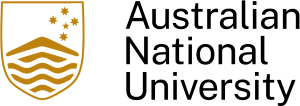ICU/Emergency Department elective, Tokyo Medical and Dental University, Japan

For my elective, I spent 4 weeks at Tokyo Medical and Dental University (TMDU) where I spent 2 weeks in Emergency Medicine and 2 weeks in Intensive Care Unit (ICU).
During my time there, I gained insight into critical care in the Japanese hospital system as well as Japanese culture.
My two weeks in Emergency Medicine involved attending the morning meetings where patients across ER-ICU, ER-HCU and the general wards were discussed. After the meeting, the team would visit the patients on their ward rounds.
Emergency physicians in Japan continue to provide care beyond the emergency room, which is different to Australia. Hence they would visit the general wards round everyday to check on patients.
The rest of the day involved observing in ER. I was able to see procedures like imaging, scopes, blood cultures, and arterial blood gases.
My two weeks in the Intensive Care Unit involved attending the morning multidisciplinary round.
The round was quite large and consisted of intensivists, specialists (cardiologists, neurologists, surgeons etc.), pharmacist, dietician, physiotherapist, nurses, clinical engineers and medical students.
The rest of the day involved observing procedures undertaken by intensivists such as bronchoscopy or central line insertions.
One day per week is their academic day where latest research would be discussed. TMDU medical students participate in journal club once per week where they present on a paper they were given.
I was also asked to do a “end-of-rotation” presentation on a patient in the ICU. It’s a casual 30 to 60 minute PowerPoint presentation in English.
I learned in my elective that medicine in Japan is primarily investigation based. There is less emphasis on history taking and medical examinations.
Imaging and procedures for patients in Japan are very fast and efficient.
Medical students do not participate much in patient care and mostly stand in the back observing.
In Japan, patients need to pay a portion of their medical expenses ranging from 10 to 30 percent depending on their ages and social economic circumstance. Ambulances though are free so ambulances regularly turn up at emergency for minor illnesses.
In emergency I saw a lot of problems due to alcohol such as pancreatitis. There were quite a few patients admitted for haematemesis.
The emergency doctors were trained in gastroscopy so they could do scopes immediately, looking for bleeding oesophageal varices.
The other part of my elective was experience Japan, particularly Tokyo outside the hospital. I explored many areas in Tokyo like Harajuku, Shibuya and Shinjuku.
The most negative part of the experience was the language barrier. A lot of English-speaking clinicians were not present during my rotations. I learned that Japanese people are naturally shy to speak English, hence often no one explained what was going on.
The medical students were quite friendly and helpful. The staff and students tried their very best to explain what was going on. This experience has been overall quite informative and positive.
